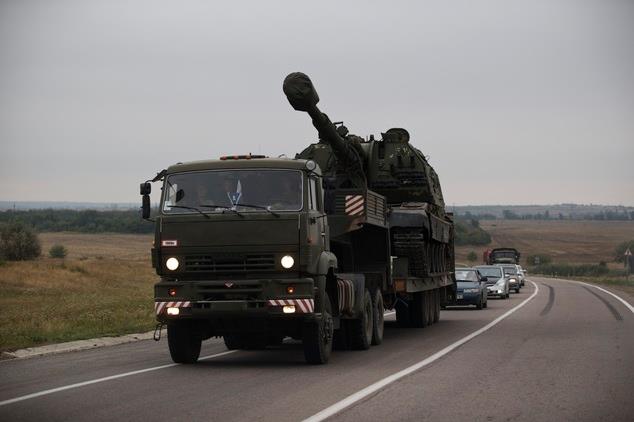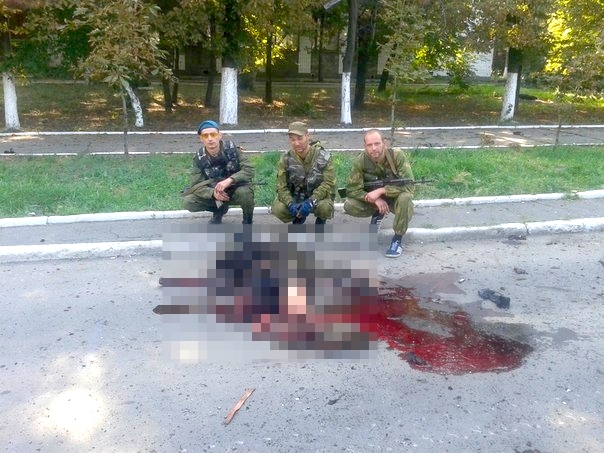During the writing of this article, the conflict between representatives of the Right Sector and law enforcement in Zakarpattia was still ongoing. But no matter how it ends, the conflict itself raises many questions.
Blurred identities, Russian agents, criminal clans
About five years ago, I visited Zakarpattia and talked with ordinary people. I wanted to know how they identify themselves. Most of my conversations were in the area where the so-called Rusyns are especially strong. Here they do not speak Ukrainian but use the local dialects almost exclusively. One can even see “Rusyn” inscriptions on the stores in the towns. When I asked these local residents what they thought of Kyivites, they said “Moscovites.” As for Galicians, they called them Poles. When it came to their own identity, these people could not say anything specific. When I asked them “what about Ukraine?” I heard an interesting response: “Ukraine is on TV.”
Certainly, it is necessary to know some of the history of Zakarpattia (incidentally, this is a purely Soviet term that emerged when this land became part of the USSR) in order to understand the blurred identities of its local residents. Yes, the majority of the population in Zakarpattia is Ukrainian. But 60 years ago, few of the locals identified themselves that way. In most cases, they used the traditional ethnonym Rusyns. In general, this term predominated on our lands up to the XIXth century. It was simply “retained” longest in Zakarpattia. Currently, the term “Rusyns” is used (primarily by Russian propagandists) in order to disorient the people of Zakarpattia. A separate “Rusyn identity” is being created, there is talk about a separate Rusyn nation, about its language and, of course, the close relationships between Rusyns and Russians. The Rusyn organization that have been created are well funded by our “Northern brothers.” It is no wonder that in Zakarpattia a variety of Rusyn litterature can be found. And even though local people are not particularly concerned with the Rusyn issue, the propaganda is doing its job.
Zakarpattia is viewed as a multi-ethnic region. In addition to Ukrainians, Hungarians, Slovaks, Poles, Romanians, Russians, Germans and others live on its territory. These minorities to a greater or lesser extent retain their identities. They are in no hurry to assimilate or to become patriots of Ukraine, considering, no doubt, that Ukraine is not something very serious. They also do not exhibit any desire to learn Ukrainian. In international communications, they tend to use Russian.
The Hungarian minority in particular is aggressively predisposed against “Ukrainization.” Its representatives, who are concentrated in the southwestern part of Zakarpattia, demand full autonomy rights for themselves. They receive considerable benefits from Hungary, and this allows them to behave relatively independently. As a rule, these people have supported anti-Ukrainian political forces, especially the Party of the Regions.
Add to this the intensive work of Russian intelligence in the Zakarpattia. Even during the time of the USSR, the KGB paid special attention to this region. After all, Zakarpattia was one of the main “windows” of the USSR into Central-Eastern Europe. It was from here that tank raids were carried out against the Hungarian uprising in 1956 and against Czechoslovakia during the Prague Spring. After the collapse of the USSR, the KGB, of course, had to be transformed. But its traditions have not disappeared. The FSB has successfully picked up the baton. For Russia, Zakarpattia remains a critical region. And considering the blurred identities and ethnic diversity of the local population, the agents have a fertile field for their activities.
These factors have played an important role in shaping the criminal clans in Zakarpattia. Generally, during the years following independence, these clans were formed in different regions — especially where there was considerable wealth. And here Zakarpattia was no laggard. Significant recreational resources and the resulting high prices for land, considerable forest reserves, which became targets of predatory exploitation, and finally significant opportunities for smuggling across the border — all this led to the formation of criminal clans that skillfully took advantage of the diversity of the local population and the relations with Russian agents. It is no wonder that Viktor Medvedchuk (pro-Russian politician and close buddy of Vladimir Putin — Ed.), one of the former leaders of the notorious SDPU (Social Democratic Party of Ukraine), has long been considered “chief” of Zakarpattia and who continues to hold on to certain positions in this region while openly demonstrating his ties to the Kremlin. It is no wonder that the Zakarpattia Oblast has turned out to be one of the most “Soviet” of the Western Ukrainian oblasts.
Unfortunately, the central government in Ukraine has paid almost no attention to these problems. No one has seriously concentrated on the formation of Ukrainian identity in Zakarpattia (on the contrary, it was being destroyed during this time). As for the criminal clans of Zakarpattia, they have been able to gain quite a foothold in the hills of Kyiv.
The shooting in Mukacheve is an attack on Ukraine
Mukacheve is a particular kind of city. For some reason, in the past it became the main center of uprisings in Hungary. And conflicts in this city during mayoral elections supposedly became the “forerunner” of the Orange revolution. Will Mukacheve play the role of revolutionary catalyst yet again?
We will not analyze the shooting itself, which took place in this city between members of the Right Sector and police officers. There has already been much commentary and confusion regarding this incident. But I think there is no doubt that one of the important aspects of this shootout is a showdown between local clans for the contraband cigarette market.
However, similar confrontations are not new in Ukraine. What is new is that a serious conflict has been incited with grenade launchers, the burning of police cars, and other things that create quite an image for mass media — especially the Russian ones. For Russian media, under current circumstances, this is a wonderful gift. They can claim that “fascists” from the “Right Sector” are rioting in Ukraine, using weapons and so on. Now it is possible to explicitly use these “fascists” to frighten people in Russia and in Ukraine.
In my view, the “Russian footprint” is quite evident in the Mukacheve events. The issue is how the Russian intelligence is operating here and how it will be able to use the confrontation in Mukacheve. At the same time, the question arises whether the Ukrainian government will be able to localize this conflict and not allow it to expand and lead to the “third Maidan,” which the Russian leadership is eagerly awaiting.
But no matter how this conflict unfolds, it already has had consequences, and they are all to the benefit of Russia.
First, this conflict has created a very negative image of Ukraine in the eyes of Europe. Moreover, it has occurred near the border with the EU. This, undoubtedly, will slow Ukraine’s progress to the EU. And when it comes to the visa-free regime to the EU for Ukrainian citizens, this can be placed on hold for some time.
Second, the shooting in Mukacheve has created great tension in Ukrainian society, diverting significant resources from the war in the Donbas. Figuratively speaking, Russia has managed to open a “second front” in Zakarpattia, which can spread throughout Ukraine.
Third, this event will damage the reputation of the patriotic forces and will strengthen the influence of the pro-Russian “Opposition bloc.” It is not insignificant that the “bloc” is now lobbying for new elections to the Verkhovna Rada.
In short, events in Mukacheve are a serious challenge for Ukraine. Whether Ukraine meets this challenge will depend on us and on our wisdom
****
Petro Kraliuk, Vice-Rector for teaching and education, Doctor of Philosophy, Professor, member of the National Union of Ukrainian Writers, Honored Scientist of Ukraine. Graduated from Lutsk State Pedagogical Institute in 1979 with a major in history. Deputy Director for scholarly activities in Rivne Slavonic Studies Institute of the Kyiv Slavonic Philology University from 11 September 2000 till 11 February 2002. The author of treatises in philosophy, culture, religious and literary studies, and numerous monographs.
Cartoon caption: Lavrov says “I think that everyone understands that the question of Crimea is closed” as he pushes the bobs in “Putin’s Pendulum”: Zakarpattia/Mukacheve, Kyiv, DNR, Crimea, Russia.







